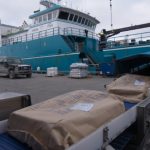According to the study $1.4 billion was spent by resident and non-Alaska anglers on fishing-related expenses in 2007, with $733 million of that paid out in Cook Inlet. It further shows that more than 15,800 jobs in Alaska depend on sportfishing, about 8,000 of which are in the Cook Inlet region, the study shows.
The study costs $450,000 and was financed by Department of Fish and Game, which was based on 2,970 in-depth surveys of resident and out-of-state fishermen. It examined how much anglers spent on fishing trips in 2007 and where that money went. Department of Fish and Game sportfishing director Charlie Swanton presented the survey at the Wasilla Legislative Information Office on Thursday night. Fish and Game employees hope to update the survey each year and track sportfishing trends.
The study shows that sportfishing is more economically vital to Cook Inlet than commercial fishing. Steve Runyan, a member of the Matanuska Valley Fish and Game Advisory Committee, said that they can say this is a huge portion of the state’s economy and it needs good management. Mat-Su sportfishermen believe the Cook Inlet commercial drift fleet intercepts too many Mat-Su-bound salmon. They blame the fleet for recent bad fishing news, such as last year’s closure of Deshka River to king salmon fishing.
Jonathan King at Northern Economics said the 2003 figures are very outdated. He cautioned against tying the two studies closely together. He added that making a direct comparison is only useful in terms of the relative importance to the state’s economy.








